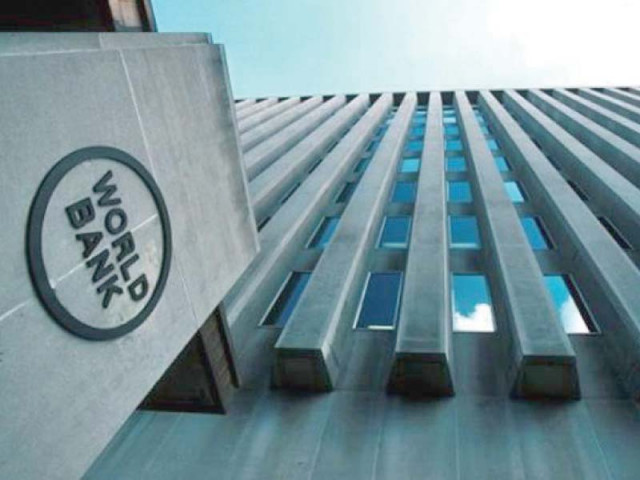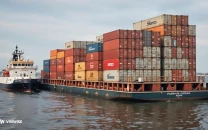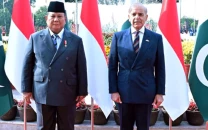World Bank’s policy loans worth $900m fail to achieve goals
Lender approved amount to put economy on sustainable path; it was instead used to boost foreign reserves

The report has found serious shortcomings in the design of the programme, which also led to missing the strategic objectives of privatisation and facilitation of the private sector. PHOTO: FILE
The IEG report has declared the performance of ‘Fiscally Sustainable and Inclusive Growth Development Policy Credits’ “moderately satisfactory”. The IEG has also declared the performance of Pakistan and the World Bank moderately satisfactory.
The IEG works independently of the World Bank management and reports directly to the executive board. The World Bank had approved two policy loans, $400 million in May 2014 and $500 million in June 2015, to help the then PML-N government put the economy on a sustainable path of development.
World Bank asks Pakistan to accept Indian proposal
However, findings of the IEG report underpinned apprehensions that the money was simply used to enhance foreign exchange reserves and finance the budget, as, barring a few, most of the programme targets could not be achieved.
The objective of the lending was “to foster private and financial sector development to bolster economic growth and mobilise revenues”.
The report has found serious shortcomings in the design of the programme, which also led to missing the strategic objectives of privatisation and facilitation of the private sector.
The programme “design had some significant shortcomings”, according to the report. It stated that programme document did not explain how the set of five measures to foster private and financial sector development were selected from a conceivably long list of feasible and relevant interventions.
It underlined that the condition of passage of the Credit Bureau Act, which was a “lower priority measure”, was included in the programme because the legislation was ready for submission to parliament.
Pakistan receives less than projected loans from World Bank
The privatisation condition was also attached with $900 million loans despite there was “no operational definition of privatisation or of the strategic sale of equity”. While citing examples, the IEG noted that the World Bank and Pakistan treated divestment at stock exchange and strategic sales of an entity to private sector alike.
It added two reform programmes, the creation of the One Stop Shop (OSS) for business registration of limited liability companies and the approval of Micro-Insurance Rules, had no associated results target. The online OSS suffered software problems and was barely in use at programme closure, according to the findings.
The IEG stated that the capacity of the government agencies to implement elements of the programme was not well vetted. Poor staffing and lack of experience of the Privatization Commission were revealed during programme implementation.
The stakeholders also did not attempt to adequately gauge popular support or opposition to the programme and the privatisation of state-owned enterprises did not find favour with the public.
One of the conditions was to lower trade tariffs and tariff exemptions to improve competitiveness and innovation. But the “aim of reducing protection was not achieved”. The outcome target to reduce the simple average statutory tariff rate from 14.4% in June 2013 to 12% or lower by end-June 2016 was not achieved. The rate stood at 13.4% at end-March 2016.
World Bank denies Sharif laundered money
Despite reduction in statutory tariff rates, the number of tariff lines that were subject to regulatory duties rose from 105 in 2013 to 568 in 2014, and the percentage of imports paying regulatory duties rose from 0.6% to 9.7% over the same period.
The IEG noted with satisfaction that the condition of raising overall tax collection from 9.6% of GDP in 2013 to 11.5% of GDP in 2016 was met, which reached 12.4% at end June 2016. However, the target to raise the number of unconditional cash transfer beneficiaries of BISP from 4.4 million to at least 5.5 million was not met.
The IEG has identified ‘substantial institutional capacity risks’ to kind of reforms envisaged under the $900 million package. It said that the staff of the Privatization Commission is inexperienced with low recorded assimilation of knowledge conveyed through advisory and technical assistance services. The Federal Board of Revenue was not fully open to engagement with development partners.
The evaluation showed that the Privatization Commission’s ability to implement the programme was overestimated. The Commission was inadequately staffed, had little experience with privatisation transactions, and did not seem to understand fully how to complete the prior actions corresponding to it.
However, the Privatization Commission did not receive cooperation from the Ministry of Water and Power. The ministry had stopped the power distribution companies from cooperating with the Commission.
Published in The Express Tribune, July 31st, 2018.
Like Business on Facebook, follow @TribuneBiz on Twitter to stay informed and join in the conversation.



















COMMENTS
Comments are moderated and generally will be posted if they are on-topic and not abusive.
For more information, please see our Comments FAQ